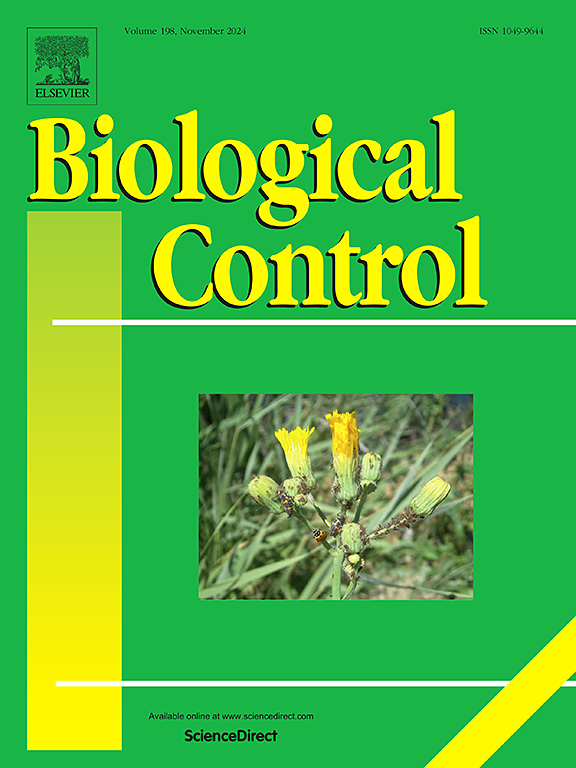先发制人和主动应用生物控制杂草:加快行动以帮助保护工作的论点
IF 3.7
2区 农林科学
Q2 BIOTECHNOLOGY & APPLIED MICROBIOLOGY
引用次数: 0
摘要
外来入侵植物(IAPs)是全球连通性的常见后果,对生物多样性构成重大威胁,放大了全球气候变化和栖息地丧失的影响。景观级植物入侵的综合管理工作通常包括机械、文化、化学和生物控制的一些组合。前三者都有完善的协议和开发管道,可以对新的入侵做出快速反应。然而,对iap的生物控制通常只有在被入侵的地区达到某种武断但无法忍受的负面影响水平,从而引发开发控制药剂的努力后才会使用。尽管越来越多的证据表明,投资于预防和积极主动的iap方法是最具成本效益的,但大多数支出,包括用于生物防治开发的支出,仍然处于入侵后的反应阶段。我们为iap的早期调查和生物控制的实施建立了一个基本原理。这种方法的一个潜在框架是将确定优先次序的方法(例如,风险评估和水平扫描)与对已知食草动物的广泛文献检索或国外范围调查和早期宿主范围测试相结合,以确定目标。此外,气候和风险相似的地区和国家之间的资源共享将减轻任何一方的投资负担。最后,对保护的投资和国家间的培训机会进一步鼓励维护自然资源以进行潜在的生物控制。通过在入侵过程的早期或之前开发和实施生物控制,减少了无数的影响和成本。本文章由计算机程序翻译,如有差异,请以英文原文为准。
Preemptive and proactive application of biological control for weeds: An argument for swifter action to aid conservation efforts
Invasive alien plants (IAPs) are a frequent consequence of global connectivity and present significant threats to biodiversity, amplifying impacts from global climate change and habitat loss. Integrated management efforts for landscape-level plant invasions often include some combination of mechanical, cultural, chemical, and biological control. The former three have well established protocols and development pipelines for rapid responses to new invasions. Biological control of IAPs, however, is often employed only after the invaded region has reached some arbitrary but intolerable level of negative impact that triggers efforts to develop agents to provide control. Despite mounting evidence that investments in prevention and proactive approaches to IAPs are the most cost effective, most expenditures, including those for biological control development, continue to be in the post-invasion reactive phase. We build a rationale for earlier investigation and implementation of biological control for IAPs. A potential framework for this approach would pair prioritization methods (e.g., risk assessments and horizon scanning) to identify targets with extensive literature searches for known herbivores or foreign range surveys and early host range tests. In addition, resource sharing among regions and nations with similar climates and risks would alleviate the onus of investment from any one party. Finally, investments into conservation and training opportunities between nations further incentivizes maintaining natural resources for potential biological control. By developing and implementing biological control earlier in or before the invasion process, countless impacts and costs are lessened.
求助全文
通过发布文献求助,成功后即可免费获取论文全文。
去求助
来源期刊

Biological Control
生物-昆虫学
CiteScore
7.40
自引率
7.10%
发文量
220
审稿时长
63 days
期刊介绍:
Biological control is an environmentally sound and effective means of reducing or mitigating pests and pest effects through the use of natural enemies. The aim of Biological Control is to promote this science and technology through publication of original research articles and reviews of research and theory. The journal devotes a section to reports on biotechnologies dealing with the elucidation and use of genes or gene products for the enhancement of biological control agents.
The journal encompasses biological control of viral, microbial, nematode, insect, mite, weed, and vertebrate pests in agriculture, aquatic, forest, natural resource, stored product, and urban environments. Biological control of arthropod pests of human and domestic animals is also included. Ecological, molecular, and biotechnological approaches to the understanding of biological control are welcome.
 求助内容:
求助内容: 应助结果提醒方式:
应助结果提醒方式:


